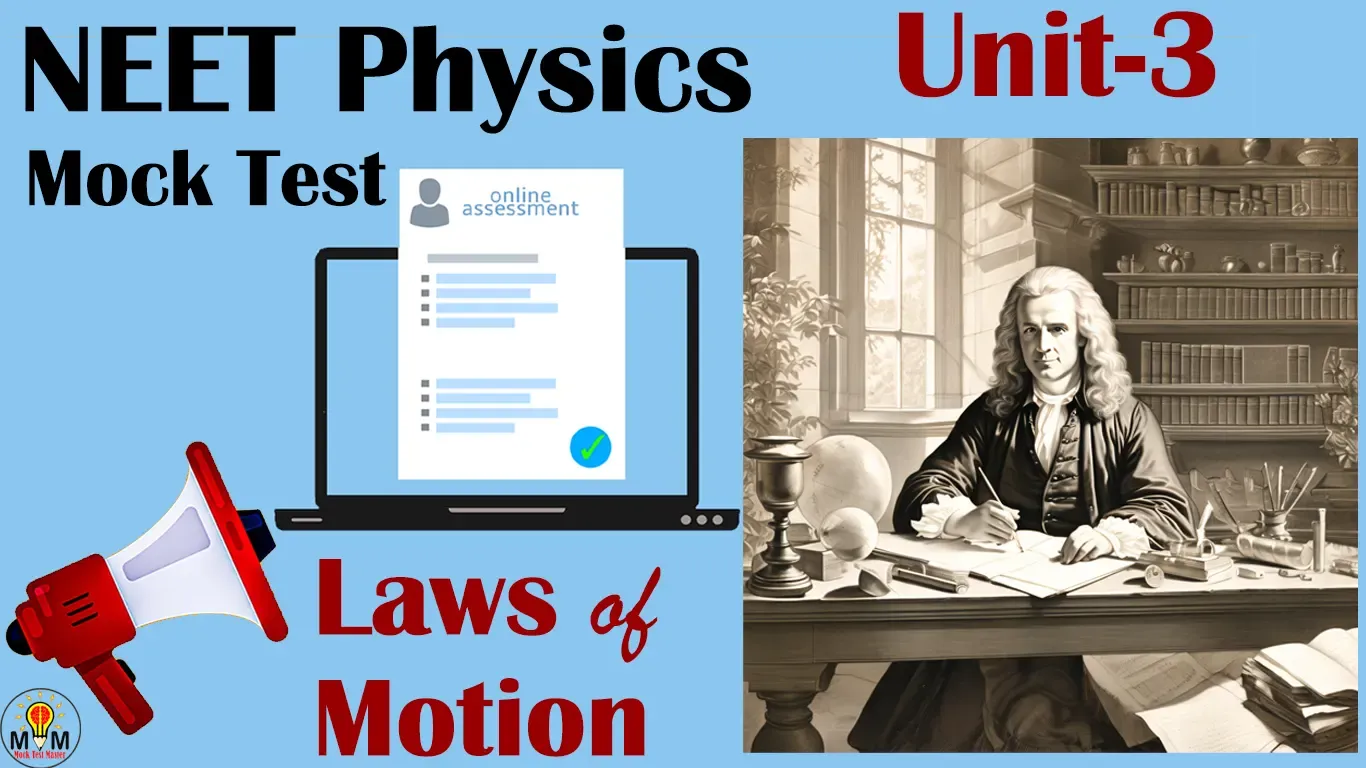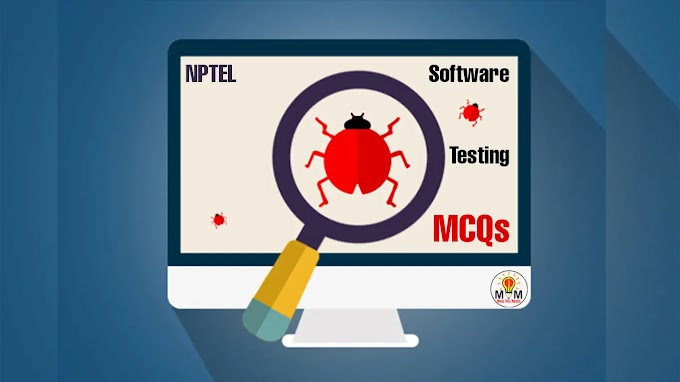In the realm of
NEET preparation, understanding the laws of motion is paramount. Unit 3, Laws
of Motion, delves into the principles laid down by Sir Isaac Newton, which
govern the motion of objects. This unit forms the backbone of classical
mechanics and is a cornerstone of physics. To excel in this section, it's
imperative to comprehend Newton's laws and their applications.
In this
comprehensive guide, we'll explore NEET Physics Unit 3: Laws of Motion in
detail and provide a set of multiple-choice questions (MCQs) to help you assess
your understanding. MCQs on NEET Physics Unit 3 Laws of Motion cover all topics
and questions with answers that are given in the latest Physics syllabus for
NEET.
Syllabus of Physics Unit 3 Laws of Motion
Force and
inertia, Newton's First Law of Motion: Momentum, Newton's Second Law of Motion,
Impulses: Newton's Third Law of Motion, Law of conservation of linear momentum
and its applications. Equilibrium of concurrent forces. Static and Kinetic
friction, laws of friction. rolling friction.
Dynamics of
uniform circular motion: centripetal force and its applications: vehicle on a
level circular road. vehicle on a banked road.
Understanding NEET Physics Unit 3: Laws of Motion
Unit 3, Laws of
Motion, revolves around Newton's three fundamental laws:
1. First Law
(Law of Inertia): An object remains at rest or in
uniform motion unless acted upon by an external force.
2. Second Law
(Law of Acceleration): The acceleration of an
object is directly proportional to the net force acting on it and inversely
proportional to its mass.
3. Third Law
(Law of Action-Reaction): For every action, there
is an equal and opposite reaction.
These laws
provide insights into the behavior of objects under the influence of forces,
laying the groundwork for understanding various phenomena in mechanics.
Key Topics Covered in Unit 3
1. Types of
Forces: Understanding different types of forces
such as gravitational force, frictional force, normal force, tension, and
applied force.
2. Free-Body
Diagrams: Learning to represent forces acting on an
object using free-body diagrams, aiding in the analysis of motion problems.
3.
Applications of Newton's Laws: Applying Newton's
Laws to solve problems involving equilibrium, motion on inclined planes,
pulleys, and other scenarios.
4. Friction: Exploring the concept of frictional force, including static
friction, kinetic friction, and coefficients of friction.
5. Pseudo
Forces: Understanding pseudo forces that arise in
non-inertial reference frames, such as centrifugal and Coriolis forces.
MCQs on NEET Physics Unit 3: Laws of Motion
Now, let's put
your understanding of Unit 3 concepts to the test with the following set of
multiple-choice questions:
1. According to
Newton's first law of motion, an object:
a) Accelerates when a force is applied to it
b) Moves with constant velocity when no
force is applied to it
c) Moves with constant acceleration in the
absence of any force
d) Moves in the direction of the applied force
2. The force
required to maintain a body in uniform circular motion is called:
a) Centrifugal force
b) Centripetal force
c) Gravitational force
d) Frictional force
3. According to
Newton's second law of motion, the acceleration of an object is directly
proportional to:
a) Its velocity
b) Its displacement
c) The net force acting on it
d) Its momentum
4. Which of the
following is an example of an action-reaction pair of forces?
a) Weight and normal force on a book resting
on a table
b) Tension in a string and gravitational
force on a pendulum
c) Frictional force between two surfaces in
contact
d) Applied force and frictional force on a moving object
5. The
coefficient of static friction is typically:
a) Greater than the coefficient of kinetic
friction
b) Equal to the coefficient of kinetic
friction
c) Less than the coefficient of kinetic
friction
d) Independent of the nature of the surfaces
in contact
Answers
1. b) Moves with
constant velocity when no force is applied to it
2. b) Centripetal
force
3. c) The net
force acting on it
4. a) Weight and
normal force on a book resting on a table
5. a) Greater
than the coefficient of kinetic friction
Unit 3 - Laws of
Motion - is a cornerstone of NEET physics preparation. By mastering the
fundamental principles laid down by Newton and practicing MCQs like the ones
provided in this guide, you can strengthen your understanding and
problem-solving skills. Incorporate mock tests and regular practice sessions
into your study routine to enhance your preparation efforts. Stay focused, stay
determined, and success will follow in your NEET physics journey!
NEET Physics Mock Test
- NEET Physics Mock Tests
- MCQs on NEET Physics Unit 3 Laws of Motion Test
- The questions are given in English language only
- You will get 60 seconds to answer each question.
- Know your score when the test is complete
Select the Mock Test
Mock Test Loadig Here
Back to Topics

Mock Test Result
Total Questions:
Answered:
Right Answer:
Wrong Answer:
Percent:
Share with Friends
Disclaimer: The accuracy of NEET Physics Unit 3 Laws of Motion multiple choice questions and answers cannot be claimed to be 100%. Please check the answers yourself. Typing errors may occur.





%20System.webp)
